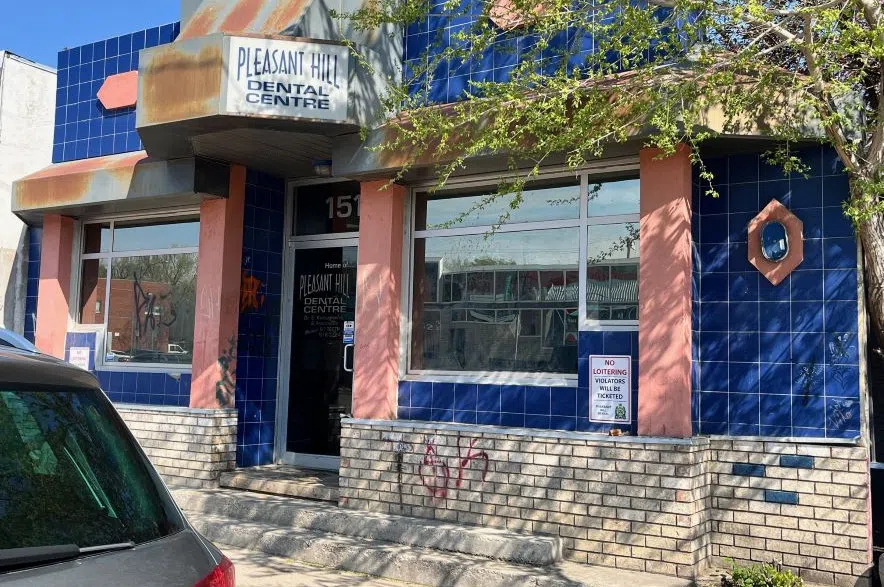A Pleasant Hill business owner is frustrated at what she calls the “degradation” of the community in the 1500 block of 20th Street West.
Dr. Ephthymia Kutsogiannis owns and operates Pleasant Hill Dental, with the Saskatoon Tribal Council Health Centre and Prairie Harm Reduction – a supervised injection site – next door on one side, and St. Mary’s Church on the other. She’s been in the area for about 30 years.
During a meeting of Saskatoon’s planning, development, and community services committee on May 8, Kutsogiannis told councillors she was angry and frustrated about what she called a “tremendous change” in the area, specifically around her dental office.
“Especially since December, I’m very concerned and very disgruntled at what has been occurring, and very concerned about my safety, and people’s safety in the area,” she said.
She said she began noticing encampments on the sidewalk around Prairie Harm Reduction several months ago, and she contacted the Riversdale Business Improvement District for help.
“Up until then, I had never really voiced my concerns, and maybe I should have because I’ve talked to various people in the Riversdale area … and they’ve always said to me ‘You know what Effie, you have to start speaking out because it’s not going to get any better,'” she said.
Kutsogiannis said she cleans up garbage and human feces on a daily basis, and was assaulted by someone who refused to move from the doorstep of her business. Other times she said she has delayed appointments because neither she nor her clients can get into her building.
“It’s getting to be overbearing,” she said.
Kutsogiannis said she’s concerned about a lack of resources in the area for people who need them, including garbage cans and bathrooms.
“I feel the government – the level of governments – enable this behaviour within this community,” she said. “When I have comments to me saying ‘Oh, what do you expect? This is 20th Street, this is Skid Row,’ that, to me, is an attitude that’s developed.”
Councillor Hilary Gough asked the dentist whether she’d be open to collaborative meetings with civic agencies, including the Saskatoon police and fire departments.
“Would you be open to meeting with a member of that team to share some of your observations and the changes you’ve seen?” asked Gough.
While Kutsogiannis said police have been very helpful in coming into her business to check in on her, she said she doesn’t believe additional meetings would accomplish much.
“How much more do I have to state in order for them to understand what’s going on?” she asked. “I’ve had many conversations with police. They know what the concerns are … All you have to do is drive by once, to understand what the concerns are.”
Mayor responds
Saskatoon Mayor Charlie Clark said the city has heard from local business owners with concerns in more than one neighbourhood, and the lack of available support and resources make the situation more challenging.
“We know that community-based service providers, the police service and the Saskatoon Fire Department are all identifying right now a tripling of people in the past year who are now living in encampments or accessing services because they’re unhoused,” the mayor said during a news conference in front of City Hall on Monday.
During the winter months, the Salvation Army had an average of 122 people per night at its emergency warming centre. The centre housed more than 230 people one night in March because other shelters were already full.
“There are less services available at a time when the demand is growing, and we’re heading into the busy summer months,” Clark said.
The mayor said that puts more pressure on existing organizations as they try and support more and more people.
Clark said in addition to the city adding more alternate response officers, police, and other resources, the Saskatoon Emergency Management Organization has also activated an Emergency Operation Centre, which includes members of various departments and representatives from the police service and fire department.











